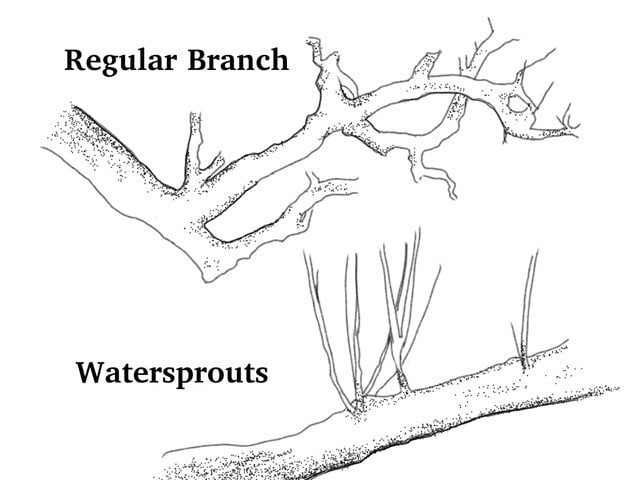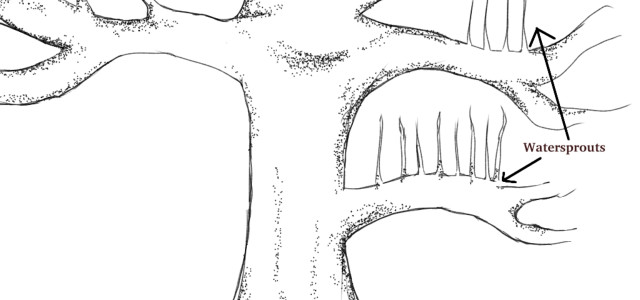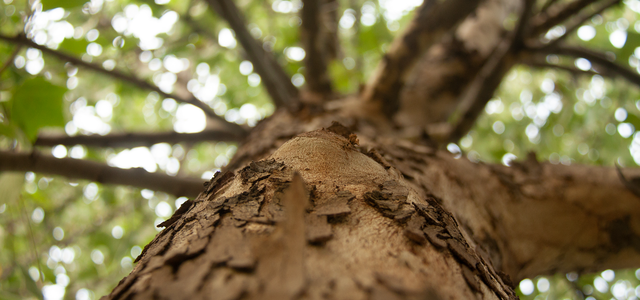Waterspouts are a common problem with many trees. Among other things, these shoots can hamper fruiting. In this article, we’ll explain what they are and how to deal with them.
Watersprouts are thin branches or shoots that grow on the trunk of trees or branches. They are latent buds that remain dormant until certain conditions cause them to sprout. Because these shoots grow out of sync with the tree, they are usually weaker. They can more easily become diseased or infected with pests.
They tend to grow at rapid speeds in small clusters or from a single point. This unwanted growth can:
- Reduce sunlight and air reaching the upper canopies of the tree
- Reduce fruiting
- Be symptomatic of a larger underlying problem
But you need to be careful in recognizing the difference between regular branches and watersprouts. We’ll cover these differences below.
How Do You Identify Watersprouts?

(Foto: Aisha Williams / Utopia )
You can recognize watersprouts by a few characteristics:
- They usually grow on older trees.
- They grow upward rather than outward.
- On branches, they’ll sit almost perpendicular to the trunk.
- They grow thinner and weaker than normal branches.
A common misunderstanding is the difference between watersprouts and suckers. Some people use ‘suckers’ to describe any out-of-place shoots. But suckers usually shoot from the ground, whereas watersprouts grow above ground.
What Causes Watersprouts?



(Foto: CC0 / Pixabay / TonW)
The University of New Hampshire explains that watersprouts occur when trees have gone through some kind of trauma or stress. They respond by stimulating new growth, and this produces watersprouts. The common causes of watersprouts are:
- Root loss
- Disease
- Lack of water
- Over-pruning
- Changes to soil
- Injury
Sometimes spotting the cause of watersprouts can be easy – for instance, injury or over-pruning. But in other cases, it’s more difficult to determine the cause. Watersprouts can be the result of environmental factors, such as droughts, flooding, and natural disasters. With ongoing changes to our planet’s climate, there are many reasons why trees can feel stressed by the environment. It might be worth investigating the quality of your soil or the leaves of the trees as an indication of environmental factors.
What Can You Do About Watersprouts?



(Foto: CC0 / Pixabay / schraubgut)
The most common way to deal with watersprouts is pruning. Pruning is when you cut parts of the tree that are not healthy or productive to the tree.
Here’s some tips for pruning waterspouts:
- Always prune when the tree is dormant. This is usually winter.
- Disinfect pruning shears to prevent the spread of disease.
- Aim to cut watersprouts before they grow more than 12 inches.
- Always cut as closely as possible to the parent branch.
- Be careful not to confuse thicker watersprouts with branches. Branches will usually be slanted as opposed to vertical.
If watersprouts continue to grow back after pruning, you should consider what the underlying problem may be. Check the soil and general condition of the tree to get some ideas.
Read on:
- 13 Best Indoor Fruit Trees to Grow at Home
- How to Identify a Tree by its Bark
- Native Gardening for Wildlife: Benefits and Tips for Beginners
Do you like this post?








